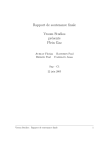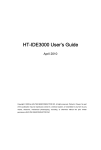Download ps.gz - FTP Directory Listing
Transcript
INSTITUT NATIONAL DE RECHERCHE EN INFORMATIQUE ET EN AUTOMATIQUE The FCTOOLS User Manual (Version 1.0) Amar Bouali, Annie Ressouche, Valérie Roy, Robert de Simone N˚ 191 Avril 1996 THÈME 1 ISSN 0249-6399 apport technique The FCTOOLS User Manual (Version 1.0) Amar Bouali, Annie Ressouche, Valérie Roy, Robert de Simone Thème 1 Réseaux et systèmes Projet Meije Rapport technique n191 Avril 1996 34 pages Abstract: We describe a set of modular extensions to our Auto/Graph verication toolset for networks of communicating processes. These software additions operate from a common le exchange format for automata and networks, called fc2. Tool functionalities comprise graphical depiction of objects, global model construction from hierarchical descriptions, var ious types of model reductions and of verication of simple modal properties by observers, counterexample production and visualisation. We illustrate typical verication sessions con ducted on usual academic examples: dining philosophers, mutual exclusion algorithms and round-robin schedulers. Based on previous experience of drastic state explosion problems we aim here at eciency in implementation. We use both explicit representation techniques and implicit techniques such as BDDs, with functional overlap at places. Key-words: Verication tools, networks of communicating processes, automata, algo rithms, data structures, BDDs, common format fc2 (Résumé : tsvp) ENSMP-CMA, B.P. 207 F-06904 Sophia Antipolis cedex INRIA, B.P. 93 F-06902 Sophia Antipolis cedex Unité de recherche INRIA Sophia-Antipolis 2004 route des Lucioles, BP 93, 06902 SOPHIA-ANTIPOLIS Cedex (France) Téléphone : (33) 93 65 77 77 – Télécopie : (33) 93 65 77 65 Manuel de l'utilisateur de FCTOOLS (Version 1.0) Résumé : On décrit un ensemble d'extensions modulaires à nos systèmes Auto/Graph de vérication des réseaux de processus communicants. Ces nouveaux logiciels opèrent sur la base d'un format commun d'échange pour les automates et les réseaux, appelé fc2. Les fonctionnalités de ces outils comprennent la description graphique d'objets, la construction de modèle global depuis des description hiérarchiques, plusieurs types de réductions de modèle et de vérication de propriétés modales simples par observateurs, la production et la visualisation de contre-exemples. On illustre des sessions de vérication conduites sur des exemples académiques classiques: le problème du dîner des philosophes, des algorithmes d'exclusion mutuels et les schedulers round-robin. Basé sur les expériences précédentes se heurtant au problème de l'explosion de l'espace d'états, nous avons pour but ici une implantation ecace. Nous utilisons deux modes de représentation, explicite et implicite par BDDs, en ayant une redondance des fonctionnalités dans chaque mode. Mots-clé : Outils de vérication, réseaux de processus communicants, automates, algo rithmes, structures de données, BDDs, format commun fc2 The FCTOOLS User Manual (Version 1.0) 3 1 Presentation Systems of communicating and synchronising entities are usually hard to specify in a correct fashion, due to problems of distributed control and parallelism. In the last decade a number of verication softwares were implemented to provide computer assistance in the design and correctness checking of such system descriptions, and used to study distributed algorithms, protocols and embedded systems. Most commonly these toolsets are based on nite state modeling of underlying global congurations, and graph-theoretic algorithms. Our pioneering Auto/Graph toolset was exploring the power of so-called proof-by-reduction techniques, where methods for compositional reductions of nite state structures try to suppress as much as possible the combinatorial explosion problem. Functions such as state quotient (with respect to behavioural equivalences), behavioural abstraction or context ltering were at the heart of the system, in addition to graphical or textual process algebraic hierarchical description facilities, and other practical auxiliary functions. The present User Manual describes basically the next generation Auto/Graph im plementation. Decision for this reimplementation was based on a number of facts. First, as functionalities were progressively added the old implementation grew larger and harder to maintain; the new one had to be modular, consisting in a set of carefully chosen func tions which could be combined together for ecient verication. Second,due to national and international collaborative projects we wanted the new toolset to be open for joint use with other foreign verication tools, which could nicely complement its functionalities; a low-level le exchange format (covering automata and hierarchical networks of such) called fc2 was then designed, and used in particular in between various software modules. Last, new symbolic techniques for implicit representation of nite state machines by so-called Bi nary Decision Diagrams had appeared, and were becoming prominent in the neighboring domain of synchronous reactive systems (real-time systems and synchronous hardware for instance). We adapted our verication techniques to this type of implementation structures and the relevant algorithmic style, in the scope of asynchronous processes communicating by rendez-vous synchronisation. The result is a new set of construction/reduction/analysis/diagnostics functions, corres ponding to a number of Unix commands working from and to fc2 les. The three main software modules are: Autograph, for graphical edition and display; fc2explicit, for ma nipulation of enumerated nite state machines; fc2implicit, for manipulation of symbolic nite state machines. Each fullls several distinct functions, sometimes with redundancy between fc2explicit and fc2implicit. Other auxiliary modules exist as well. By nature fcTools is in perpetual ongoing expansion, as more useful analysis functions are identied and characterised as ecient algorithms. This manual describes only the cur rent state, which may already be obsolete by the time of reading in case a next version is al ready out. Information on system availability and documentation can be obtained on request from [email protected], or from URL http://cma.cma.fr/Verication/verif-eng.html. The next section describes the overall architecture of software modules comprised in the toolset, with an informal description of their individual functionalities and how they can be combined. Then a working description of Unix commands and options is given, followed by RT n191 4 A.Bouali,A.Ressouche,V.Roy,R.de Simone a small session example. Each verication module is then further presented and explained, with insights on its internal algorithms, and indications on how-to-use for best eciency. 2 Modular Software Architecture The verication toolset comprises a number of stand-alone tools, each implementing some well-dened functionalities. Tools may be used in succession through the common fc2 le description format. At a deeper programming level, most of our tools use identical internal representation (in terms of C++ classes), so that combination of code is also possible there. See the appended Implementation Manual for details. Figure 1 sketches the overall software architecture, with tools/functions gured in oval shapes and objects/data in rectangular frames. Explicit mention is made to fc2 format where available for objects (for instance, there is no direct representation of BDDs in fc2). In the sequel we present the fc2 format and the individual verication tools at very abstract level. Each tool will be extensively presented later on. 2.1 The fc2 format The fc2 format was originally designed to interface several preexisting verication tools. In this way these heterogeneous tools could be further developed independently, while used in cooperation for their complementary features. The format allows for description of labeled transition systems and networks of such. While the format is not syntax-friendly (as it represent objects which are supposedly ob tained by translation or compilation), it is still reasonably natural: automata are tables of states, states being each in turn a table of outgoing transitions with target indexes; networks are vectors of references to subcomponents (i.e., to other tables), together with synchroni sation vectors (legible combinations of subcomponent behaviours acting in synchronised fashion). Subcomponents can be networks themselves, allowing hierarchical descriptions. In addition a permissive labeling discipline allows a variety of annotations on all dis tinct elements: states, transitions, automata and networks as a whole. It is through this labeling that behavioural action labels are provided of course, but also structural informa tion for source code retrieval, logical model-checking annotation and even private hooked informations. Processes augmented with time, value or probability informations could cer tainly benet from that, and this is not limitative. Annotative labels are dealt with as regularly as possible in syntax, in simple form at predictable location, so that they can be treated smoothly at parsing time by any tool, often by simply disregarding them if they do not address the tool's specic functionalities. The actual labeling contents are stored in tables forming the objects headers, so that only integers references to table entries are actually present in the object bodies themselves (automata or networks). Finally, labels can be structured by simple operators (sum, product and several others) to allow richer information. More about the fc2 format can be found in [3]. INRIA The FCTOOLS User Manual (Version 1.0) 5 2.2 Functional Modules A typical case-study analysis will contain a number of typical design steps, corresponding to successive application of distinct functional modules from our toolset. The main such functions are: description of the network of communicating agents (possibly graphically) The gra phical editor Autograph allows to draw such descriptions much in the usual fashion of process-algebraic terms, and then produces fc2 format representations. It also contains the annotation labeling facilities. See autograph description in this manual for details. linking of multile descriptions Large hierarchical system descriptions can be split bet ween dierent les (for instance as dierent Autograph windows). The tabulated naming informations in resulting fc22 les need not be consistent across les, and so merging these partial descriptions into a single le for later analysis takes some bookkeeping care. construction of some form of global model Model-based automatic verication re lies on expansion of network into a global state-transition model. Two main imple mentation techniques can be used here: the extensional approach with a classical repre sentation of expanded automata with enumerated states and transitions; the symbolic approach, based on implicit representation by Binary Decision Diagrams of sets of states (only), while representation of the full transition relation is avoided, and remain parted by possible events, somehow in the Petri net fashion. Our tools cover both modes of implementation with large mutual redundancy, so that best eciency can be thought according to each given specication. Of course global models can suer state or bdd size explosion problems, leading to the well-known bottleneck of the approach. Several methods can be used to refrain this explosion, like abstracting or minimizing (explicit) subnetworks at intermediate level of hierarchical descriptions. In all cases the global model expansion remains a fundamental part of verication systems, even if applied in particular settings or on transformed objects to cope with complexity. reduction/abstraction of the model Smaller models can be obtained in roughly two ways. First, one can abstract the actual concrete behaviours into new ones of a more concise nature; it corresponds to the converse of action renement, where more beha vioural details are progressively added (here they are abstracted away). Second, states with equivalent potential behaviours can be merged (using bisimulation for instance). Note that behaviour abstraction paves the way to state reduction, as it usually re moves dierences between otherwise similar states (consider for instance observational behaviours, including tau invisible steps inside visible ones). These techniques can be even more benecial when applied in a compositional fashion, minimising intermediate level descriptions. RT n191 6 A.Bouali,A.Ressouche,V.Roy,R.de Simone nets 2 FORMAT TRANSLATION atg net Other textual input net 0 h "automaton V2 v0 E1 Graphical Description Fc2 Files Descriptions FC2 FILE LINKAGE fc2link nets 2 net 0 h "automaton V2 v0 E1 Hierarchical Fc2 Description IMPLICIT STATE SPACE CONSTRUCTION fc2isp EXPLICIT AUTOMATON CONSTRUCTION fc2glob a 1 0 1 0 1 0 Implicit Automata ENUMERATION fc2iglob Representation ABSTRACTION REDUCTION OBSERVERS fc2imin,fc2iabst fc2iobs c 1 τ 0 b 2 3 τ Explicit Automata Representation EXTRACTION ANALYSIS fc2idead,fc2write REDUCTION ABSTRACTION fc2min,fc2abst SOURCE RECOVERY SOURCE RECOVERY nets 2 net 0 h "automaton V2 v0 E1 Sets of States (Fc2) nets 2 net 0 h "automaton V2 v0 E1 Result in Fc2 Format nets 2 net 0 h "automaton V2 v0 E1 Counter Example Path (Fc2) Figure 1: Software hierarchy INRIA The FCTOOLS User Manual (Version 1.0) 7 Another way of reducing the model is by taking into consideration a given context limiting the state-space exploration. This context can for instance be extracted from a given property to check. specication of properties and model-checking There are several ways of specifying correctness properties. Some basic obvious properties can be stated directly as charac teristics of the nite state model, and checked by simple analysis on it: existence of deadlock, livelock or divergent states for instance. More rened properties can be expres sed either as modal temporal logic formulae or as specication automata. Distinctions are usually made according to visions of time: in linear time frameworks properties of behavioural sequences are considered, while in arborescent branching time frameworks one gets interested in properties of states through their past and future neighbours. An abundant literature was devoted to comparison of expressiveness and design of algorithmic methods best adapted in various cases. Our tools focus on specication of properties as specication automata, given that the temporal logic approach seemed well treated elsewhere. Again, there are two approaches to compare two nite state models, one being the specication of some (maybe partial) intended behaviour of the other. The rst one is bisimulation comparison; it works well when partial means abstract, when time is branching and the processes may both exhibit nondeterministic behaviours. The second one considers the specication automaton as an observer, and performs some kind of product machine construction to deduce whether (un)desirable joint congu rations can be attained; this approach, known as on-the-y technique, works well under determinism assumptions on the specication automaton. Also, as a rule of thumb, explicit representation methods win in the rst approach, while implicit representation are best suited to the second one. Another dimension to the property specication problem depends on whether the analysed process is viewed as a transparent or a black box, that is whether the property may explicitly refer to control points (states) in it, or only through behavioural abilities (leading to or possible from the states in question). For instance a mutual exclusion property can most naturally be stated by the fact that no global conguration may contain specic local states in parallel subcomponents. Thus the toolset will have to provide ways of composing this type of property from the system description, and this without aecting the latter for each property to prove. counterexample production at the network level Diagnostics from analysis and mo del-checking on incorrect descriptions usually result in either sets of (undesirable) states, or counterexample paths. Typically, deadlock or divergent states are of the rst form, while runs without bisimilar counterpart are of the second form. With the addition of prior reduction phases these results are produced on smaller automata, and are themselves usually smaller than the corresponding ones on original networks. But these now have to be retrieved, if the user is to be informed at a level of RT n191 8 A.Bouali,A.Ressouche,V.Roy,R.de Simone description he/she can understand. The struct annotation eld of the fc2 format was in fact used to carry exactly that minimal information which allows reconstruction. For instance, if weak bisimulation minimisation was used and hidden transitions thus removed, these transitory behaviours may have to be rediscovered to glue actual visible steps back together. Diagnostic reconstruction may be a time penalty, but is only necessary in case of property failure, and avoids storing much extra information at all times, which could abort verication for lack of space. Figure 1 displays our global software architecture, with tool names and functionalities and types of arguments and results. Next section will provide a synthetic overview of each tool and ways to use it in practice. INRIA The FCTOOLS User Manual (Version 1.0) 9 2.3 Tools and Commands We now describe the dierent software modules at the level of Unix commands, with names and options. Remark: most of the transformation tools generate single fc2 description, dumped on screen (Unix standard output). In order to save the result in a le, one has to redirect the output of the command to that le. atg: synopsis: Unix command for Autograph, the graphical editor and display system for fc2 descriptions. Autograph uses usual process algebra conventions for graphical representation of automata and networks, and provides translation into fc2 for mat. Autograph currently reads only plain automata from this format, while a dedicated .atg le format can be loaded and written on le for any drawing, even ill-structured or incomplete. usage: atg result: [les.fc2][les.atg] A menu bar for graphical edition and a specic window for each loaded le (from automata only initial states are displayed at rst). Autograph and its functionalities are further described in section 3. fc2link: .fc2 synopsis: Linker of (partial) fc2 les produced by Atg. It redirects references to a sub components to its actual description (found from another le), and matches the labeling indexes. usage: fc2link -main [-nodebug] result: le.fc2 [le1.fc2...[leN.fc2]...] The result is a single fc2 le containing the complete hierarchical fc2 description of net0 in le le.fc2 together with all its subcomponents found in any le men tioned. Default resulting le contains verication debugging information used by source recovery functions, such as the le names of individual fc2 components given under an fc2 expression recalling the hierarchy of the network. This extra information can be discarded from the result by setting the -nodebug option. Misformed descriptions end up in so-called consistency errors. The result is output on screen. RT n191 10 A.Bouali,A.Ressouche,V.Roy,R.de Simone fc2min: synopsis: (Explicit) Automata minimizer with respect to strong, weak and branching bisi mulation. usage1 : -bisimulation [-fc2] [-debug] le.fc2 The option bisimulation can be one of the options s, w or b for strong, weak and branching bisimulation respectively. fc2min result: If option -fc2 is set, the result is the quotient automaton in fc2 format. Other wise it is a partition of the state space into equivalence classes. The -debug source recovery option adds, for each quotient state or partition element, a description of its content as sum (union) of state references from the initial automaton. This information is stored in the struct eld of the new states in the fc2 structure. fc2implicit: synopsis: Symbolic manipulation of labeled synchronized automata vectors (fc2 networks). It contains several functionalities, selected by options. usage: The command can be invoked with either one or two argument les: 1. One le mode: fc2implicit where [-reach | -dead | -live | -dive] [-s | -w | -b [-itau]] [-debug] [-fc2] le.fc2 -reach: computes the set of reachable global states. -dead, -live, -dive: computes the set of deadlock, livelock and divergent global states of the network respectively. If option -fc2 is set in addi tion, fc2implicit generates a counterexample path in fc2 (as a string automaton), leading from the initial state to one of the computed states. -s, -w, -b: computes the strong, weak and branching equivalence parti tion respectively. If option -fc2 is set, then generates an fc2 description of the quotient automaton. Option -itau can be added for branching bisimulation to turn o the -closure memorization, replaced by a local recomputation at need. -debug: adds extra information for source recovery in the structlabels of global nets, states and transitions. 1 le.fc2 must contain a single automaton. Otherwise, an error message is generated. If minimization is asked for the global automaton of a network described in a fc2 le, fc2explicit/fc2implicit processors should be used instead. INRIA The FCTOOLS User Manual (Version 1.0) 2. Two les mode: fc2implicit {-seq | -weq } [-debug] [-fc2] where -seq, -weq: 11 le1.fc2 le2.fc2 performs the strong and weak bisimulation comparison bet ween the topmost nets of both les. -debug: produces a counterexample path in fc2 leading to a state without equivalent in the other automaton, with other infos (iteration level in the partitioning, ...). shorthand commands: The following Unix commands are equivalent to the general fc2implicit com mand with particular options. The i letter following fc2 here stands for implicit. fc2ireach = fc2implicit -reach fc2idead = fc2implicit -dead -fc2 fc2ilive = fc2implicit -live -fc2 fc2idive = fc2implicit -dive -fc2 fc2istrong = fc2implicit -s fc2iweak = fc2implicit -w fc2ibranch = fc2implicit -b fc2iglob = fc2implicit -reach -fc2 result : Whenever option -fc2 is set, generates an fc2 description of the result. Other wise produces information messages (result size, existence of deadlocks for ins tance). RT n191 12 A.Bouali,A.Ressouche,V.Roy,R.de Simone fc2explicit synopsis: Explicit manipulation of labeled synchronized automata vectors (fc2 networks). It contains several functionalities, selected by options. usage: The command can be invoked with either one or two argument les. Currently only the -abstract option uses two les. fc2explicit [-s | -w | -b | -abstract] [-comp | -global] [-bitset] [-fc2] [-debug] [-o file.fc2] le1.fc2 [le2.fc2] where -abstract: Assumes one le contains a net description and the other an abs traction criterion. Performs the abstraction of the global automaton of net w.r.t. the abstraction criterion. Further description of abstraction use can be found in section 7. -seq, -weq: Requires two fc2 les containing two networks. Performs the comparison of the two systems with respect to strong (-seq) or weak (-weq) bisimulation. In case of non equivalence potential states without match are searched for as early as possible, and a path leading to such a state is provided as result. -comp: Computes the global automaton from the network contained in the ar gument le in a compositional way, following the hierarchical description in nested subnets. Used in conjunction with -s, -w, -b options to alternate minimisation and construction phases. -global: Computes the global automaton from the network contained in the le argument in its attened version (non hierarchical). Default value. -s, -w, -b Applies strong, weak or branching bisimulation minimisation on network contained in le argument. Can be combined with -comp option. Internally invokes fc2min (see above) on each intermediate automaton. -bitset Computes the state space by applying action events under a bitset scheme algorithm for replacement of local states in the vector. Used best with the -global option, on large vectors of small individual automata com ponents. See further fc2explicit description in 5.1. -o: provides a lename for output. -fc2: if set, result is the fc2 description of the quotient automaton; otherwise only size gures are printed. Prints on standard output, except if -o option is used. -debug: if set, automata states are decorated with structure information for source recovery on original network description. INRIA The FCTOOLS User Manual (Version 1.0) 13 shorthand commands: The following Unix commands are equivalent to the general fc2explicit com mand with particular options. fc2glob = fc2explicit -global -fc2 fc2strong = fc2explicit -global -s -fc2 fc2weak = fc2explicit -global -w -fc2 fc2branch = fc2explicit -global -b -fc2 fc2compstrong = fc2explicit -comp -s -fc2 fc2compweak = fc2explicit -comp -w -fc2 fc2compbranch = fc2explicit -comp -b -fc2 fc2abst = fc2explicit -abstract -fc2 fc2abststrong = fc2explicit -abstract -s -fc2 fc2abstweak = fc2explicit -abstract -w -fc2 fc2abstbranch = fc2explicit -abstract -b -fc2 result : Whenever option -fc2 is set, generates an fc2 description of the result. Other wise produces information messages (result size for instance). RT n191 14 A.Bouali,A.Ressouche,V.Roy,R.de Simone fc2view synopsis : Source recovery viewer. When a path is given as argument (the path must be retrieved from a global automaton of a network), fc2view pops up two windows, one containing the graphical tree representing the hierarchy of nets forming the network from which the path has been recovered, and a control panel to simulate the path. Nodes and leaves of the tree are labeled by the names of the corres ponding nets. In the control panel, buttons are provided to re transitions in the path going back and forth, and step by step, plus a graphical scale allowing the user to access directly at some depth in the path and re the transition at that depth. Each time a transition is red, its (global) label is displayed in a dedicated zone (near the name of the path) and so are in the graphical tree the local ones that have produce the global label: these labels are displayed in the graphical tree, near the components that have oered them, which are themselves highlighted. An extra feature allows the user to visualise the fc2 description of any net appearing in the tree by clicking on its displayed name. Actives part (if any) of the text are also highlighted (source and target states of current active transition) as well as the text background when the component is active. usage : fc2view le.fc22 where le.fc2 is assumed to contain a path synthesized from a network using the -debug option, so that it can be displayed as a distributed run on the range of corresponding fc2 les. Creates as many (slave) windows as there are automata components in the network, in their fc2 syntax. Each window displays current local share of transition in a graphical header, and fc2 text below on demand. Simulation can travel back and forth under control of a graphical panel. result : See above fc2hide synopsis : When a fc2 network is given in input, pops up a window showing the list of action labels the network can perform at the global level. Mouse clicking on labels permits selection of labels to hide. When selection is nished, the user can save the result in a new fc2 le as a new network where the selected global label has been renamed into the silent action . This allows to restrict the range of visible behaviours, and thus to increase observational reduction. 2 The argument le must contain a single string automaton containing a path (obtained by fc2idead for instance), and containing debug informations INRIA The FCTOOLS User Manual (Version 1.0) 15 usage : le.fc2 Assumes le.fc2 contains a network. result : A new network where selected labels of synchronisation vectors of the main net are renamed into . fc2hide 2.4 First steps: a session example We now illustrate the basic verication features on the famous dining philosophers problem. More advanced features will be demonstrated later on. The graphical Atg description of the system (in the case of 3 philosophers) is displayed in gure 2 (in its Postscript output form). It consists essentially of the automata describing the possible behaviours of the forks and of halfbrains for philosophers. A full philosopher is obtained by synchronising these halves on eating and thinking (each half deals with one fork). The full synchronisation network is also displayed, with visible actions becoming indexed by a philosopher's rank. We now suppose these three parts (the fork, halfbrain automata and the network) have been translated (by Atg) into distinct fc2 les, say fork.fc2, halfbrain.fc2 and philonet.fc2. The fc2 version of the fork automaton is displayed in gure 3. The par tial description of the network, with only component interface declaration for the fork and halfbrain, is displayed in gure 4. Linking these les will produce the appropriate correspondence between these subsystem calls and their automata contents from the other les. 0-duick$ fc2link -main philonet.fc2 fork.fc2 halfbrain.fc2 > philo.fc2 - fc2link: education version v0 - fc2tool: parsing fc2 file: philonet.fc2. - fc2tool: file: philonet.fc2 parsed successfully - fc2tool: parsing fc2 file: fork.fc2. - fc2tool: file: fork.fc2 parsed successfully - fc2tool: parsing fc2 file: halfbrain.fc2. - fc2tool: file: halfbrain.fc2 parsed successfully - fc2link: File "philonet.fc2" - fc2link: net number 0 has struct "philonet" - fc2link: net number 1 has struct "fork" - fc2link: net number 2 has struct "halfbrain" - fc2link: File "fork.fc2" - fc2link: net number 0 has struct "fork" - fc2link: File "halfbrain.fc2" - fc2link: net number 0 has struct "halfbrain" - fc2link: Check consistency on class of net 0, file philonet - fc2link: Check consistency on class of net 0, file fork - fc2link: Check consistency on class of net 0, file halfbrain> 0-duick$ RT n191 16 A.Bouali,A.Ressouche,V.Roy,R.de Simone think think drop drop drop drop take take fork take take eat eat halfbrain think1 think1 drop drop think think halfbrain halfbrain fork fork take take take drop take drop drop drop think think halfbrain halfbrain eat eat take drop take drop eat eat take take fork fork eat1 eat1 take take take take drop drop halfbrain halfbrain halfbrain halfbrain think think eat eat think3 think3 halfbrain halfbrain think2 think2 eat eat eat eat take take think think eat eat eat2 eat2 eat3 eat3 think think drop drop take take fork fork drop drop drop drop think think take take halfbrain halfbrain drop drop philonet Figure 2: The 3 dining philosophers specication The result is displayed in gure 5 Now the description can be submitted to our analysis and verication tools. 2.4.1 Implicit evaluation of the global system We rst evaluate the global system to have an idea of the size of the state space. We use for that symbolic methods based on BDDs that allow easy evaluation of global state spaces. 0-duick$ fc2implicit -reach philo.fc2 - fc2implicit: education version v0 INRIA The FCTOOLS User Manual (Version 1.0) 17 nets 1 hook"main" > 0 struct"fork" net 0 behavs 2 :0 "take" :1 "drop" logic "initial">0 hook "automaton" vertice 2 vertex0 edges 1 edge0 behav 0 -> 1 vertex1 edges 1 edge0 behav 1 -> 0 Figure 3: le fork.fc2 - fc2tool: parsing fc2 file: philo.fc2. - fc2tool: file: philo.fc2 parsed successfully - fc2implicit: Making reachable state space - fc2implicit: Reachable states: 214 BDD nodes: 85 0-duick$ The global automaton has 214 states. The BDD that represents it has 85 nodes only. 2.4.2 Finding and Recovering the Deadlocks This academical problem is known to have deadlocks. We have a way to detect them and to extract an example path leading to a deadlock from the global initial state. Here is the session using fc2implicit: 0-duick$ fc2implicit -dead -fc2 philo.fc2 > deadpath.fc2 - fc2implicit: education version v0 - fc2tool: parsing fc2 file: philo.fc2. - fc2tool: file: philo.fc2 parsed successfully - fc2implicit: Making reachable state space - fc2implicit: State space depth: 13 - fc2implicit: First deadlock(s) detected at depth 7 - fc2implicit: Reachable states: 214 BDD nodes: 85 - fc2implicit: Global automaton has 2 DEADLOCKS state(s) BDD nodes: 27 0-duick$ The rst detected deadlocks have been found at depth 7 in the global automaton, that is the shortest path leading to a deadlock has 7 states and 6 transitions. As we have set the option -fc2, an example path has been extracted and written in fc2 in deadpath.fc2. RT n191 18 A.Bouali,A.Ressouche,V.Roy,R.de Simone nets 3 hook"main" > 0 struct"philonet" net 1 structs 1 :0 "fork" behavs 2 :0 "take" :1 "drop" struct 0 behav 1+0 hook "synch_vector" net 2 structs 1 :0 "halfbrain" behavs 4 :0 "eat" :1 "take" :2 "drop" :3 "think" struct 0 behav 2+1+0+3 hook "synch_vector" net 0 behavs 6 :0 "eat1" :1 "eat2" :2 "eat3" :3 "think1" :4 "think2" :5 "think3" struct _< 1,2,2,2,1,2,2,2,1 hook "synch_vector" vertice 1 vertex 0 edges 18 edge 0 behav 3 < *,*,*,3,*,3,*,*,* ->0 edge 1 behav 0 < *,*,*,0,*,0,*,*,* ->0 edge 2 behav 5 < *,3,3,*,*,*,*,*,* ->0 edge 3 behav 2 < *,0,0,*,*,*,*,*,* ->0 edge 4 behav 1 < *,*,*,*,*,*,0,0,* ->0 edge 5 behav 4 < *,*,*,*,*,*,3,3,* ->0 edge 6 behav tau < *,*,*,*,*,2,*,*,1 ->0 edge 7 behav tau < *,*,*,*,*,1,*,*,0 ->0 edge 8 behav tau < 1,*,*,2,*,*,*,*,* ->0 edge 9 behav tau < 0,*,*,1,*,*,*,*,* ->0 edge 10 behav tau < 1,*,2,*,*,*,*,*,* ->0 edge 11 behav tau < 0,*,1,*,*,*,*,*,* ->0 edge 12 behav tau < *,2,*,*,1,*,*,*,* ->0 edge 13 behav tau < *,1,*,*,0,*,*,*,* ->0 edge 14 behav tau < *,*,*,*,*,*,2,*,1 ->0 edge 15 behav tau < *,*,*,*,*,*,1,*,0 ->0 edge 16 behav tau < *,*,*,*,1,*,*,2,* ->0 edge 17 behav tau < *,*,*,*,0,*,*,1,* ->0 Figure 4: le philonet.fc2 INRIA The FCTOOLS User Manual (Version 1.0) % FC2 file generated by fc2link from FC2 files: % philonet.fc2 (main) fork.fc2 halfbrain.fc2 D prefix file(any any) -> any nets 3 h "main">0 s file("philonet",0) < file("fork",0),file("halfbrain",0),file("halfbrain",0), file("halfbrain",0),file("fork",0),file("halfbrain",0),file("halfbrain",0), file("halfbrain",0),file("fork",0) net 1 B2 :0 "take" :1 "drop" s "fork" l "initial">0 h "automaton" V2 v0 E1 e0 b 0 r 1 v1 E1 e0 b 1 r 0 net 2 B4 :0 "eat" :1 "take" :2 "drop" :3 "think" s "halfbrain" l "initial">0 h "automaton" V4 v0 E1 e0 b 3 r 1 v1 E1 e0 b 1 r 2 v2 E1 e0 b 0 r 3 v3 E1 e0 b 2 r 0 net 0 B6 :0 "eat1" :1 "eat2" :2 "eat3" :3 "think1" :4 "think2" :5 "think3" s "philonet"<1,2,2,2,1,2,2,2,1 h "synch_vector" V1 v0 E18 e0 b 3<*,*,*,3,*,3,*,*,* r 0 e1 b 0<*,*,*,0,*,0,*,*,* r 0 e2 b 5<*,3,3,*,*,*,*,*,* r 0 e3 b 2<*,0,0,*,*,*,*,*,* r 0 e4 b 1<*,*,*,*,*,*,0,0,* r 0 e5 b 4<*,*,*,*,*,*,3,3,* r 0 e6 b tau<*,*,*,*,*,2,*,*,1 r 0 e7 b tau<*,*,*,*,*,1,*,*,0 r 0 e8 b tau<1,*,*,2,*,*,*,*,* r 0 e9 b tau<0,*,*,1,*,*,*,*,* r 0 e10 b tau<1,*,2,*,*,*,*,*,* r 0 e11 b tau<0,*,1,*,*,*,*,*,* r 0 e12 b tau<*,2,*,*,1,*,*,*,* r 0 e13 b tau<*,1,*,*,0,*,*,*,* r 0 e14 b tau<*,*,*,*,*,*,2,*,1 r 0 e15 b tau<*,*,*,*,*,*,1,*,0 r 0 e16 b tau<*,*,*,*,1,*,*,2,* r 0 e17 b tau<*,*,*,*,0,*,*,1,* r 0 Figure 5: The 3 philosophers in fc2 format Now we visualize back in Atg this result that we picture out in gure 6. RT n191 19 20 A.Bouali,A.Ressouche,V.Roy,R.de Simone think2 think2 tau tau think3 think3 tau tau think1 think1 tau tau Figure 6: A deadlock path The deadlock corresponds to the case where each philosopher takes a fork (the action after each think action): then no action can be further enabled from any of them. Figure 7: Fc2view display Now if -debug option was added to the fc2implicit command, further annotations were appended to the path example so as to allow source recovery. Then the path can be simulated as a run on fc2 les using fc2view, or even visualised graphically on an original displayed network with Autograph.In the former case, a graphical view of the network tree is displayed with a control panel that allows the user simulate the path: active components are highlighted on the way as well as the action label they perform. A specic zone is dedicated for the path name and the global realised action name: fc2 textual description of the path and components can be displayed by clicking on appropriate names. Active component's text is also highlighted as well as active source and target states (see gure 7). INRIA The FCTOOLS User Manual (Version 1.0) 21 In the latter case one needs only load the path in fc2 to Autograph, and then selects the Debug:Edge button from the menu bar. Then each selection of an edge will highlight the source and target states at all components in their respective Autograph windows, and active communications at ports in the synchronisation network (see gure 8). RT n191 22 A.Bouali,A.Ressouche,V.Roy,R.de Simone Figure 8: Autograph display 3 The Graphical Editor Autograph Autograph (invoked under the Unix command atg under X-windows) is a graphical dis play system for both labeled transition graphs and networks of communicating systems. Lay-out is very much in the tradition of process algebra graphical depiction, as shown in gure 8. Objects in Autograph can also be extensively annotated so as to match the fc2 format standards. In section 2.4, gure 2 was produced from Autograph graphical displays. Autograph can be used to graphically edit systems but also to visualise automata that were produced elsewhere, typically as an output of verication. Then when reading an fc2 le Autograph prompts the user for interactive unfolding and positioning of suc cessive states. An automaton can also be automatically drawn (using a spring-like attrac tion/repulsion algorithm between states). Visualisation of networks is under construction, as is visualisation of counterexample runs on existing networks. INRIA The FCTOOLS User Manual (Version 1.0) 23 3.1 General Features In practice Autograph is a multi-window, unstructured editor: system descriptions are checked for structural coherency only at translation into fc2 format, and subsystem parts contained in dierent windows are translated independently in separate les and not linked together. This allows the user freedom to work temporarily with incomplete descriptions, and to reuse system parts in various compositions. Therefore Autograph is based on two le representation formats: fc2 for structured objects, and atg for possibly inconsistent drawing descriptions, containing additional graphical positioning data. 3.1.1 Menu Bar Autograph fronts the user with a single menu bar, from which all editing functions appli cable to all graphical windows are selected. As a result some functions may need an extra mouse click in the window(s) to be concerned (like in the Save to File function). The Files, Windows, ObjectsEdit and Labels menus deal with management of the respective types of objects. While rather self-explanatory they are described in more details in the sequel. The Globals menu deals basically with cut-and-paste and miscellaneous functions to be applied undistinctively on all editable objects. Placing deals with positioning of folded objects, and Attributes allows to play with fonts and colors. The Abstract Action menu deals with edi tion of an automaton representing an abstract criterion. The Help menu contains useful information on how to use Atg. 3.1.2 Mouse Buttons The three mouse buttons are dierent bindings: the functions selected from menus have to be applied using the left mouse button, while the middle button moves any kind of objects, and the right button (pre)selects a number of objects, or all objects in a given rectangular zone, typically to be applied the next function as a whole. 3.1.3 Editable objects Consisting of graphical editable objects Autograph oers vertices for states, boxes for sub systems, ports for signal interface, edges for both automata transitions and port connections, and webs for multipoint extended connections. All such objects can be annotated with semantic informations as allowed in the fc2 format. Behavioural labeling of automata tran sitions form their action abilities as usual. The only structural requirement of autograph is that ports only occur on boxes and edges in between vertices, ports and webs altogether (no free end to an edge). 3.2 File Management This menu contains in addition the quit menu button. RT n191 24 A.Bouali,A.Ressouche,V.Roy,R.de Simone Autograph saves les in .atg, .fc2 or .ps formats. Postscript format is not scaled to t (a given page size). Autograph reloads les from .atg format, and reads from .fc2 format in case the le contains a single automaton (in the current version). In the second case the user must unfold successive states to provide the actual lay-out. At rst only the initial state is pictured. Then, by dragging a phantom line to any point in the drawing zone the user indicates both a main direction and a minimal distance from which to place new vertices. 3.3 Window management Windows can be created and deleted from the corresponding menu. In addition they can be resized to t the actual drawing, or given a title name. Such names are important as they will become the fc2 name of the window content (network or automaton). In general drawings may exceed the window size (with usual scrollbar facilities). The Window:See/Hide Global menu button allows to pop up a global view spanning the whole object. Such windows cannot be edited, but unexplored vertices can easily be spotted from their highlighting, and the regular view from the editable window can be repositioned by its phantom. Each window keeps the memory of its last operation, which can be undone by the Win dow:Undo button. 3.4 Edition Objects can be edited from general functions in the ObjectsEdit menu. Shorthands key board bindings allow fast selection of editing functions. All types of objects can be created, moved, deleted. In addition boxes can be resized, edges can be added or removed inter mediate points (called nails) for broken arrows, states can be declared initial and can be explored/unexplored (folded/unfolded). There is no structural consistency requirement on edited objects. Only at translation into fc2 are such consistency rules checked. 3.5 Labeling and Annotating All object types can be labeled. Following the fc2 syntactic conventions these labels are split in four distinct elds: behav, struct, logic and hook according to intention. Of course labeling is mostly optional. The Label:Create/Edit All menu button selects the full editor which is popped at each further mouse click on objects. There are four edition areas, corresponding to the four labeling elds above. As a shorthand the Label:Create/Edit Default menu button allows one-eld edition, of behav labels for edges, webs and ports, of struct labels for vertices and boxes. This simpler function covers 90 Labels are displayed on the same drawing area as objects, which can be overwhelming sometimes. Other buttons from the Label: menu allow to hide or unmask labels globally or individually (or as a selection set), from specic labeling elds or indistinctly. INRIA The FCTOOLS User Manual (Version 1.0) 25 Finally the Label:Show Label/Object highlights the bindings from labels and objects to one another. 3.6 Automatic Placing The Placing:Explore button allows to start or resume unfolding on states/vertices. States with incomplete display of outgoing transitions are identied by a smaller circle inside them. Placing:Unexplore allows to fold back states or transitions out of sight. From the Placing:Align submenu sets of selected objects (right mouse button, remem ber?) can be aligned horizontally or vertically, from their centers, their left, right, upper or lower corners. They can also be projected on a circle: drag the mouse from the intended center to any point to lay on the circle itself. Placing:Align:Spring calls an automatic layout algorithm called Spring (courtesy of Michel Baudoin-Lafond, from LRI/Université d'Orsay), based on minimisation of a certain attraction/repulsion function amongst states. 3.7 Debug (diagnostic recovery) Provided a diagnostic information (a path usually) was obtained in fc2 using the -debug option of fc2explicit or fc2implicit, it can be explored and mapped on the original distributed network representation. To do this, rst load the .fc2 le and explore it. Notice behaviours are now vectors of references. Then by selecting the Debug:Edge/Vertex mode, any click on an edge or vertex in this path will highlight corresponding elements in other windows containing the original network. Warning: A number of assumptions are made here, for proper use. These are not checked by autograph and may result in error. First, it is supposed that all les comprised in the network are present, even if iconied windows. Second, autograph windows should not have been changed by edition (other than harmless small moves) since last translated into fc2 les. Third, the basename of the basename.fc2 le should be identical to the basename.atg le in which the graphical description was stored. In the current version the path is displayed both on transitions of individual automata , and on ports of boxes containing them. Vertices, edges, ports and the corresponding labels are highlighted. As the same component can occur several times in the description, boxes are assigned integer references and these integer are used everywhere to record to which box the behavioural element is tied. While this requires information deciphering to get used to, it was found preferable to the other option where windows were duplicated (to the point of submerging the screen ability for display). 3.8 Abstract Action With this menu one can add annotation on an automaton to provide relevant informations so that it can be interpreted and translated as an abstract action. The AbstractAction:begin menu button selects the abstract action initial state. RT n191 26 A.Bouali,A.Ressouche,V.Roy,R.de Simone The AbstractAction:end menu opens a vertex as successful terminal state of an abstract action, whose name has to be provided then in a textual editor. The AbstractAction:save translates the window content in fc2 format as an abstract action. The net contains a hook "abstract_action", the begin state have a logic "initial" and the end state have a behav giving the name of the abstract action. 3.9 Translation into fc2 Translation from graphical representations to fc2 les is quite straightforward, specially on automata. There is a number of consistency checks to insure safe interpretation (in fact just common sense considerations): Automata must have an initial state; Boxes may not overlap (proper nesting); Innermost boxes must have all their ports labeled, and contain either a struct name (the subcomponent to be instantiated later from another source description) or an automaton; Edges should not link a vertex to a port/web, and not two ports apart from neighbou ring boxes (siblings or mother/daughter in the containment tree). Connections should not contain more than one external port (without external port, the connection is called internal to the subnetwork represented by the mother box, and correspond to an action hidden at this level). Connections here are sets of ports bound together by being linked to the same webs (so the fc2 format allows multipoint synchronisation). As a shorthand two ports can be directly linked by an edge for a binary synchronisation. Each connection will produce a synchronisa tion vector describing a possible behaviour of the (subnetwork translated from their) mother box. Synchronisation vectors will be labeled (or internal) according to the external port of the connections. Globally visible actions are formed by outermost webs, ports and edges bearing an explicit label (a box is said to be outermost if not nested inside another one, outermost ports are ports on outermost boxes, and outermost webs/edges are tied only to outermost ports). The previous example from section 2.4 already showed Atg drawings and their fc2 counterpart. INRIA The FCTOOLS User Manual (Version 1.0) 27 4 The fc2 le linker fc2link A complete network description may be split amongst several actual les, possibly originated from dierent sources, textual or graphical. This allows components reuse and modularity. On the other hand most verication tools will only accept a single le input. Linking les together consists mainly in ensuring a proper correspondence in label references, between the locations where subcomponents are dened and their invocation in a larger network. Example of this is provided in gure 5, where the fork description in gure 3 is substituted to its reference inside previous network of gure 4. Tabular references must be merged, and so usually shifted to avoid conicts. fc2link requires a -main lename, whose topmost network (net0) will be taken to become the global network. Hierarchical subcomponents are only selected from the set of fc2 les provided as arguments as they are needed, through dependency analysis. Ambiguity results in errors. 5 Global System Generation The global model construction/expansion is a main part of model-based verication tools. States in such a model are vectors of component (local) states, and behavioural transitions are obtained by interleaving or synchronization of local behaviours. Of course this means potential combinatorial explosion, and methods for compact representation of global state spaces are at the core of all approaches to model-based verication techniques. fcTools oers two alternative implementations of the product construction: fc2glob, classically based on enumerated representation of states and transitions; fc2iglob, a symbo lic version based on Binary Decision Diagrams for implicit representation of (sets of) states. Both are embedded in the respective commands fc2explicit and fc2implicit. While the explicit product construction yields naturally a full automaton (with transi tions), the implicit BDD implementation produces rather a symbolic version of the global reachable state space, so that producing a full global fc2 automaton requires more eort to list transitions for le printing. On the other hand many subsequent analysis do not require the actual automaton at this stage. 5.1 The Explicit Global System Generator fc2glob The construction algorithm is rather straightforward. Hash tables are used to keep the set of already reached states represented as bit vectors, and new discovered states are given an integer reference and stored in a list of states to explore. Target states are stored as part of the source state description together with the labeled transition reaching them. When invoked recursively on a multi-level hierarchical network the explicit implemen tation can be alternated with reduction functions at intermediate stages with the -comp option. One recovers then the compositional model reduction approach popularized through the original Auto tool. RT n191 28 A.Bouali,A.Ressouche,V.Roy,R.de Simone Synchronisation vectors can be applied in any of two ways. When the -bitset ag is on, a bitvector mask selects applicability on any (bitvector) state, and other bitvector functions then actually compute the target state. The other way is more traditional. It was found experimentally that the bitset approach works better for large vectors with components of few states (the uncompositional, at approach), while traditional transition application retains eciency when components put in parallel were themselves large automata. 5.2 The Implicit Global System Generator fc2iglob fc2iglob (or fc2implicit -reach) computes the (BDD characteristic formula given an ordered boolean encoding of) the set of global reachable states of the system. No com positional speed-up method is foreseen, so that the network is attened to a single-level vector of individual automata. The reachable state space is of course evaluated in a breadth rst search strategy, applying event synchronisation vectors individually until xpoint. This gains eciency as the symbolic representation of a given synchronisation vector does not deal with idle components. Fixpoint reachable state computation can be rened to allow for on-line deadlock de tection (states without behaviours), and followed by livelock or divergent states detection on the result (a divergent state may perform innite sequences of hidden tau actions, a livelock state can exhibit only such behaviours). The tool only enumerates states if asked to produce the fc2 automaton on le with the -fc2 option (otherwise it provides size gures). If deadlock/livelock/divergent states were queried and found, it provides a diagnostic path. If -debug option is used, additional information is inserted about the origin of transitions in terms of network components. 6 Bisimulation minimisation and equivalence checking These functionalities are implemented both with implicit and explicit representation tech nologies. In the former case the algorithm assumes a network description as argument (and not a single automaton, so as to benet from cleaver encoding using boolean variables); in the latter case a global automaton is built prior to minimisation, but compositional reduc tions can be applied on hierarchical network descriptions. Experience showed that explicit methods can run substantially faster when the size of the considered automaton is still ma nageable for them. On the other hand symbolic methods are sometimes applicable on large systems, provided the number of classes remain low (for instance in weak bisimulation when only a few signals are left visible to distinguish between states). Also they have a clear use when only comparing two distinct networks (the equivalence checking problem). The tools deal with all three standard variants, namely strong, weak and branching bisimulation. The Relational Coarsest Partitioning Algorithm of Kanellakis and Smolka [2] is used to rene a partition of the states, until xpoint. In case of equivalence checking of two distinct automata the renement can possibly be aborted before xpoint, when it is found that some state has no match left from the other automaton. INRIA The FCTOOLS User Manual (Version 1.0) 29 6.1 The Implicit Algorithm Symbolic algorithms for the computation of (strong, weak or branching) bisimulation equi valence classes were described in [1]. The quotient automaton can be produced in fc2 through symbolic projection functions, to the eect of replacing any (symbolic) state by a uniquely determined representative, and then providing integer representations of such representative to be used as new target states. When checking for equivalence between two distinct networks the synchronous product is built so that only couple of states reached in some common behavioural path are tried for bisimulation. This instills some on-the-y avor to the approach. A path leading to a matchless state with minimal splitting iteration index is produced when debug ag is on. See section 2.3 for Unix command syntax. 6.2 The Explicit Algorithm Can be iteratively applied on automata resulting from subprocesses for compositional reduc tions (using the -comp ag). Builds a global automaton,then reduces it into another explicit automaton, minimal in states and with only transitions explicit in the former ones (no transitive closure in case of observational bisimulation). Warning: under development. When checking for equivalence between two distinct networks the disjoint union of the two state spaces is built, and then partitioned as a whole. The algorithm then possibly aborts because a class contains no states from one of the automata, before reaching xpoint. Then a list of states without match is provided as counterexample. See section 2.3 for Unix command syntax. 7 The Model Abstraction Abstract Actions allow to observe an automaton with a coarser atomicity level. So it ap pears as the opposite of renement, and as such takes an important role in analysis, where preservation of some prior less detailed version can be a useful check. The idea is to collapse a number of sequences of concrete behaviours as abstractly equivalent and atomic, calling such a set an abstract action. Any concrete behaviour sequence somehow implements the abstract behaviour then. For niteness reasons and ecient automatic verication we res trict to the case where abstract actions correspond to regular expressions of (alternative) concrete behaviours, and thus to nite automata. Reducing a global system with respect to a set of abstract actions results in a system conceptually simpler, where meaningful activities have been isolated as coarser-grain atoms and named. A practical subcase arises when a single abstract action consisting of the complement of the desired behavioural trace language is provided. Then nitary trace inclusion is obtained by checking the non admission of the abstract action by the system. In any case, determinism is a desirable property for abstract actions, concerning algorithmic RT n191 30 A.Bouali,A.Ressouche,V.Roy,R.de Simone exit exit AbstAct AbstAct enter enter enter enter ~enter ~enter tau tau Figure 9: philosophers abstract-action eciency. In general abstraction is not compositional w.r.t. network operators such as parallelism. Abstract actions are gathered in a new alphabet, to be labels of new transitions. New states are based on concrete ones (only that some may usually become unreachable). We currently input abstract actions as automata in the fc2 format, using the following syntax to represent sequence of concrete actions: ? action abstract ? action single = = j j? single ? actionjsingle ? action:abstract ? action ID ?ID j j #ID !ID ? is the true wildcard action and and represents any concrete action while the false action is ?. To match any path that contains the concrete action ?a.#b.!c, we have to provide in the abstract action automaton a transition labeled by ?a.#b.!c.?. For instance, in gure 9 we use the Atg abstract-action feature to describe an abstract behaviour refuting mutual exclusion. The fc2 description below corresponds to the translated form of the gure 9. nets 1 hook"main" > 0 struct"AbstAct" net 0 behavs 3 :0 "exit" :1 "enter" :2 "AbstAct" logic "initial">0 hook "abstract_action" vertice 3 vertex0 edges 2 edge0 behav ~1 -> 0 edge1 INRIA The FCTOOLS User Manual (Version 1.0) 31 behav 1 -> 1 vertex1 edges 3 edge0 behav tau -> 1 edge1 behav 1 -> 2 edge2 behav 0 -> 0 vertex2 behav 2 7.1 The Explicit Abstractor fc2abst From the description above each abstract action is in essence an automaton with transition labeled by (expressions on) concrete behaviours, with a dedicated terminal state itself labeled by the abstract name. Then a criterion is a collection of such automata, to be gathered in a single one by classical union. The abstracted automaton is built by constructing some synchronous product of the network with this structure, and setting new states and transitions in the result only when terminal criteria states are reached (bearing their name to become the new transition la bel, while the target state correspond to the one produced from the network alone). This procedure has to be applied for each new created state facing the whole criterion. 7.2 The Implicit Abstractor fc2iabst Warning: under development. From the transition relation of the global automaton and the abstraction criterion, an abstract transition relation is built. Then, to get the abstract model, we compute the reachable states from the initial state with the new transition rela tion. The command fc2iabst is actually a restricted use of the tool command fc2implicit. One has in fact to give two fc2 les as input to the command, the rst being the network description and the second the abstract criterion. Result output option is automatically set. See section 2.3 for Unix command syntax. 8 Verication by Observers A great deal of practical verication is usually conducted by compiling an automaton-like structure from the property to establish, with possibly additional annotations on states and transitions of various sorts (success, failure or recur states, don't care transitions,...). RT n191 32 A.Bouali,A.Ressouche,V.Roy,R.de Simone Verication then starts by constructing a synchronised product of the (usually large) network state space with the (usually smaller) state space of the observer structure. One can attempt to introduce the actual verication algorithms in the middle of this construction, to get potential negative results as early as possible (known as on the y or local techniques). Here again the distinction between implementations based on explicit and implicit state representation are relevant. Symbolic techniques are usually a clear winner, specially when no representation of subsets of transitions are required, and only forward search across states is needed (since backward search may exit the reachable state space and needs to be controled). This is the case for safety properties. In the current version of fc2implicit one can only specify deadlocks, livelocks, and di vergent states as particular congurations. A dealock is a state without outgoing transitions, a livelock is a state from which there will never eventually be produced any visible action, a divergent state is one from which there is an innite behavioural sequence without visible label content. In practice what this means is that special recognizing states in observers should be deadlocks, inducing deadlocks in product machines also, for safety properties. For liveness properties the unwanted nonprogress loops should correspond to hidden behaviours. In all case this is awkward and the current situation is not as expressive as should be. We plan to extend this with far more exible descriptions of particular states and transitions as the fc2 format made special provision for that. The combined construction poses little problem and can actually be described inside the formalism, by setting the network and the observer in regular parallel. According to ag options selecting which particular feature is looked for, one discovers symbolically these states/loops from the network which can be coupled (in the synchronous product) to particular states of the observers. Then a (shortest) path from initial state to one of the state identied as such is produced. Finally, if -debug option is set, source recovery functions query the state structural elds to uplift this diagnostic back to the original multile network description, and to autograph display. INRIA The FCTOOLS User Manual (Version 1.0) 33 9 Source Information Recovery When invoked with -debug option, both fc2implicit and fc2explicit preserve a structural correspondence between states: a global state obtained by product is a (comma separated) list of local states in the innermost components of the network from which the global auto maton originated ;a reduced state in a quotient automaton is a union/sum of states in the unreduced former automaton. In case of compositional alternated products and reductions one gets corresponding alternation of parenthesized sum and list expressions. In addition the fc2 les contains in its header a description of the current structure (in terms of les where constitutive elements were found). The previous elements allow at any time to retrieve how states distribute on the original descriptions. No such information is kept for transition labels, but the mapping of global be haviours into local ones, once known the source and target states, is usually straightforward (and if several cases apply, they are all valid anyway). Such a reconstruction is performed after observational minimisation in the -debugcase. It should be noted that preservation of debug information can be space and time consuming, which is why it is turned on only on explicit ag option. When -fc2and -debug option ags are set, potential counterexample paths are comple ted with transition behaviour label mapping down to components. In this way the counte rexample les can be loaded to autograph or fc2view for display on distributed networks, where local state changes and behaviours are highlighted. See further description in auto graph and fc2view sections. RT n191 34 A.Bouali,A.Ressouche,V.Roy,R.de Simone References [1] A. Bouali and R. de Simone. Symbolic bisimulation minimisation. In Fourth Workshop on Computer-Aided Verication, volume 663 of LNCS, pages 96108, Montreal, 1992. Springer-Verlag. [2] P.C. Kanellakis and S.A. Smolka. CCS expressions, nite state processes, and three problems of equivalence. Information and Computation, 86:4368, 1990. [3] E. Madelaine and R. De Simone. The FC2 Reference Manual. Technical report, INRIA, 1993. available by ftp from cma.cma.fr:pub/verif as le fc2refman.ps.gz. [4] J.K. Ousterhout. Tcl and the Tk Toolkit. Professional Computing Series. Addi son-Wesley, 1994. INRIA Unité de recherche INRIA Lorraine, Technopôle de Nancy-Brabois, Campus scientifique, 615 rue du Jardin Botanique, BP 101, 54600 VILLERS LÈS NANCY Unité de recherche INRIA Rennes, Irisa, Campus universitaire de Beaulieu, 35042 RENNES Cedex Unité de recherche INRIA Rhône-Alpes, 46 avenue Félix Viallet, 38031 GRENOBLE Cedex 1 Unité de recherche INRIA Rocquencourt, Domaine de Voluceau, Rocquencourt, BP 105, 78153 LE CHESNAY Cedex Unité de recherche INRIA Sophia-Antipolis, 2004 route des Lucioles, BP 93, 06902 SOPHIA-ANTIPOLIS Cedex Éditeur INRIA, Domaine de Voluceau, Rocquencourt, BP 105, 78153 LE CHESNAY Cedex (France) ISSN 0249-6399





































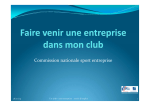



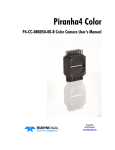
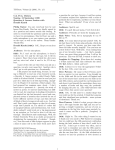


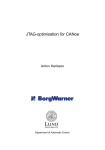
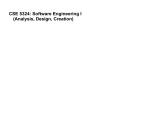
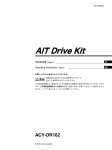
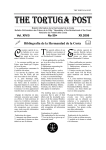
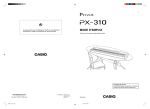
![Jeu [MOTEUR DE JEU]](http://vs1.manualzilla.com/store/data/006360093_1-0190a053fc1d13305162051b2225209a-150x150.png)

